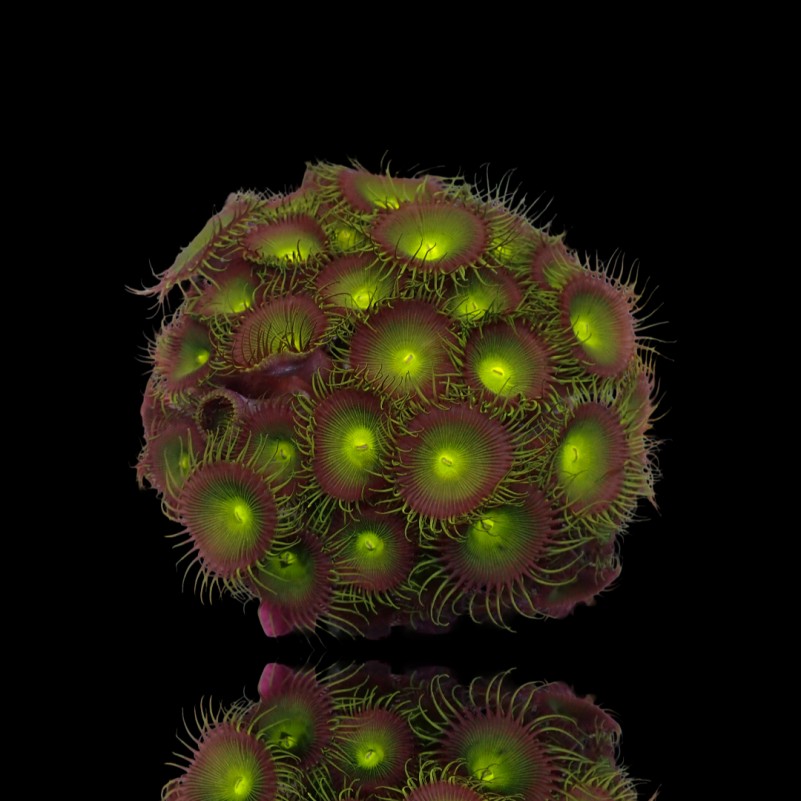






The corals on the pictures shown are an impression and is not the coral itself that we send. We always select the best corals of each species to ship to you.The corals on the pictures shown are an impression and is not the coral itself that we send. We always select the best corals of each species to ship to you.
Protopalythoa spp., commonly known as green star polyps or green button polyps, are a type of colonial coral belonging to the family Zoanthidae. They are highly sought after in the aquarium trade due to their vibrant green coloration and relatively easy care requirements.
Here are some key characteristics and care tips for Protopalythoa spp.:
Appearance: Protopalythoa spp. form dense colonies of polyps with a green coloration. Each individual polyp typically has a circular shape and a central mouth surrounded by tentacles.
Habitat: These corals are commonly found in shallow tropical waters, particularly in the Indo-Pacific region.
Lighting: Moderate to high lighting is ideal for Protopalythoa spp. in aquariums. They require sufficient light to maintain their vibrant green coloration and to support photosynthesis.
Water flow: Moderate water flow is recommended to prevent detritus buildup and to help distribute nutrients and oxygen to the polyps.
Water parameters: Protopalythoa spp. prefer stable water parameters. Keep the temperature between 72-78°F (22-25°C), pH between 8.1-8.4, and salinity around 1.025.
Feeding: These corals are photosynthetic and derive much of their nutrition from symbiotic algae (zooxanthellae) living within their tissues. However, they can also benefit from supplemental feeding. Offer them small meaty foods such as brine shrimp, mysis shrimp, or finely chopped seafood once or twice a week.
Compatibility: Protopalythoa spp. are generally peaceful and can be kept with a wide variety of other coral species and reef inhabitants. However, they can grow quickly and may overshadow slower-growing corals if not pruned regularly.
Propagation: They can be propagated easily by fragmenting the colony and attaching the fragments to rock or rubble. Ensure that any tools used for fragging are clean and sterile to prevent the introduction of pathogens.
Toxicity: Some species of Protopalythoa can produce toxins that may be harmful to other coral species if they come into contact. Be cautious when handling these corals and avoid allowing them to come into direct contact with other corals.
Overall, Protopalythoa spp. are excellent additions to reef aquariums, providing both visual appeal and ecological benefits. With proper care and maintenance, they can thrive and contribute to a vibrant and healthy aquarium ecosystem.